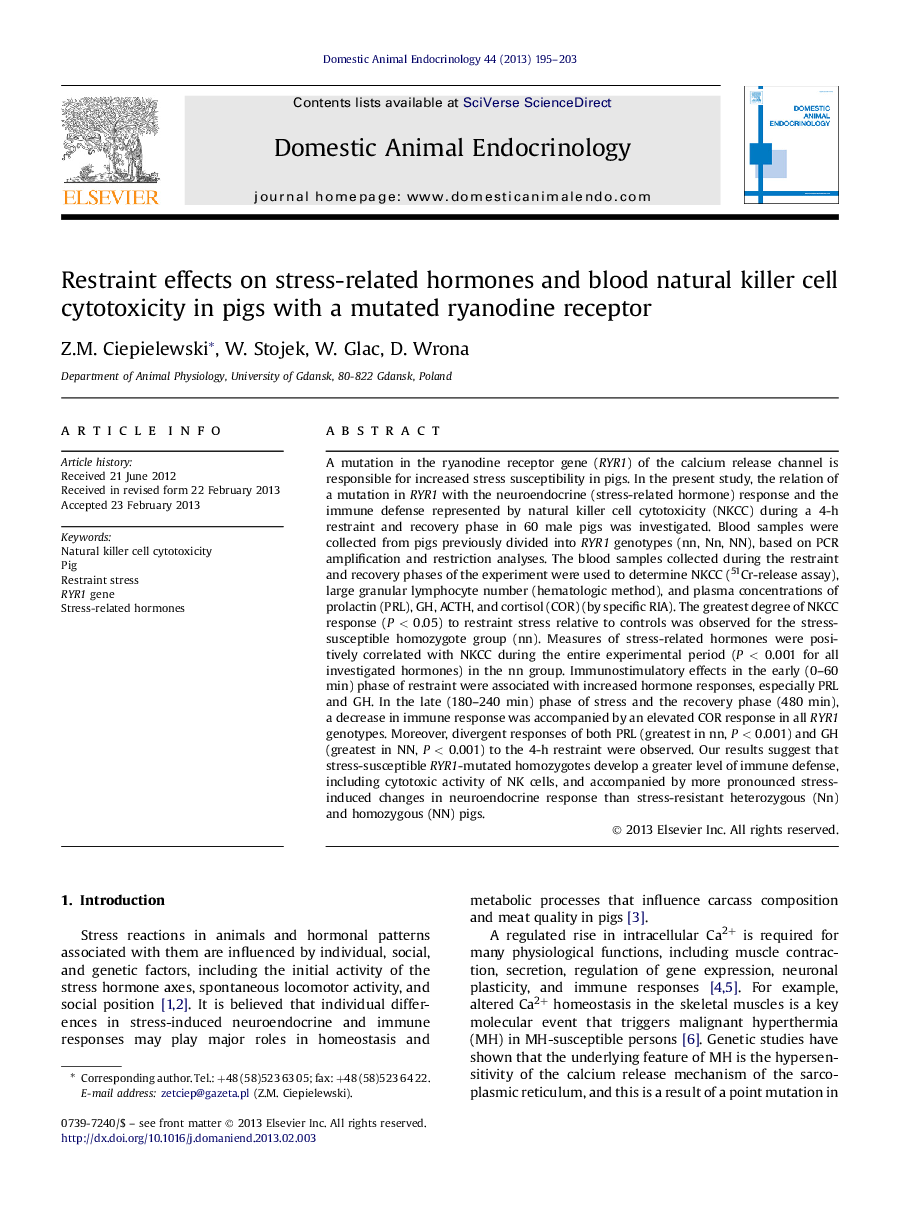| کد مقاله | کد نشریه | سال انتشار | مقاله انگلیسی | نسخه تمام متن |
|---|---|---|---|---|
| 2393563 | 1101328 | 2013 | 9 صفحه PDF | دانلود رایگان |

A mutation in the ryanodine receptor gene (RYR1) of the calcium release channel is responsible for increased stress susceptibility in pigs. In the present study, the relation of a mutation in RYR1 with the neuroendocrine (stress-related hormone) response and the immune defense represented by natural killer cell cytotoxicity (NKCC) during a 4-h restraint and recovery phase in 60 male pigs was investigated. Blood samples were collected from pigs previously divided into RYR1 genotypes (nn, Nn, NN), based on PCR amplification and restriction analyses. The blood samples collected during the restraint and recovery phases of the experiment were used to determine NKCC (51Cr-release assay), large granular lymphocyte number (hematologic method), and plasma concentrations of prolactin (PRL), GH, ACTH, and cortisol (COR) (by specific RIA). The greatest degree of NKCC response (P < 0.05) to restraint stress relative to controls was observed for the stress-susceptible homozygote group (nn). Measures of stress-related hormones were positively correlated with NKCC during the entire experimental period (P < 0.001 for all investigated hormones) in the nn group. Immunostimulatory effects in the early (0–60 min) phase of restraint were associated with increased hormone responses, especially PRL and GH. In the late (180–240 min) phase of stress and the recovery phase (480 min), a decrease in immune response was accompanied by an elevated COR response in all RYR1 genotypes. Moreover, divergent responses of both PRL (greatest in nn, P < 0.001) and GH (greatest in NN, P < 0.001) to the 4-h restraint were observed. Our results suggest that stress-susceptible RYR1-mutated homozygotes develop a greater level of immune defense, including cytotoxic activity of NK cells, and accompanied by more pronounced stress-induced changes in neuroendocrine response than stress-resistant heterozygous (Nn) and homozygous (NN) pigs.
Journal: Domestic Animal Endocrinology - Volume 44, Issue 4, May 2013, Pages 195–203